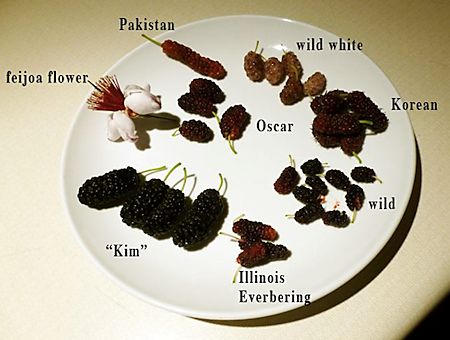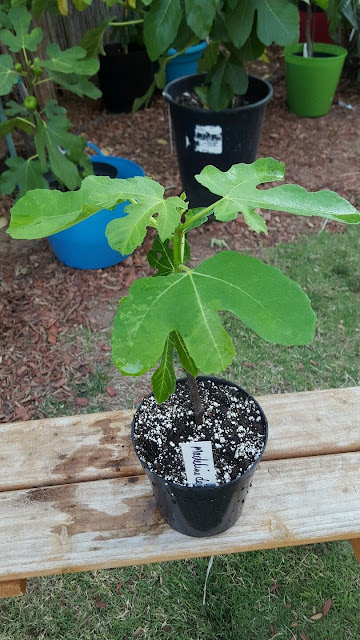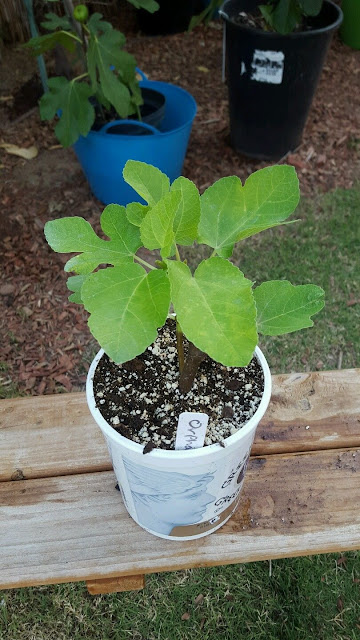So far 0 for 2 with Fast growing trees. I buy alot of trees from online nurseries. 99% of the time the trees show up in good health. However I've struck out twice now with Fast growing trees.
They have a great site and customer service but the tree packing process needs to be rethought out. It is just not working.
2 trees and both times the results were the same. A completely dried out tree due to not enough moisture in the soil during shipment.
Jamaican Cherry - Muntingia calabura AKA Panama Cherry
The Jamaican Cherry
came from Fast-growing-trees.com and I'm glad I paid the $4 warranty
because the plant arrived looking really beat up. The soil looks like it
was replaced by peat moss and then covered by a bag to keep moist. The
combination of soil change and heat from the slow shipment choice
probably did a double whammy on the plant and it's struggling big time. I
hope I can revive it.
Hopefully they have a good replacement policy, because it's an uphill battle for this little tree from the get go.
Update: 6/5/16
Well the mutingia bit the dust. Fast growing trees will replace it however since it came in such poor condition.
Update: 6/14/16
I received my replacement tree from Fast growing trees. But it took 8 days to get to me unfortunately. It was hung up over the weekend and then didn't get redelivered until Tuesday instead of Monday.
I think the biggest problem I have is how they bare root the tree and then add in replacement peat and not enough moisture to keep the plant alive and healthy.
The good thing is they do have an amazing customer service and credited me for the tree. Would I buy from them again? Yes but only trees that are hardy enough to survive the cross country trip.
Update: 6/25/16
So I decided to use my store credit to get an Owari Satsuma. This little guy made it here just fine.




